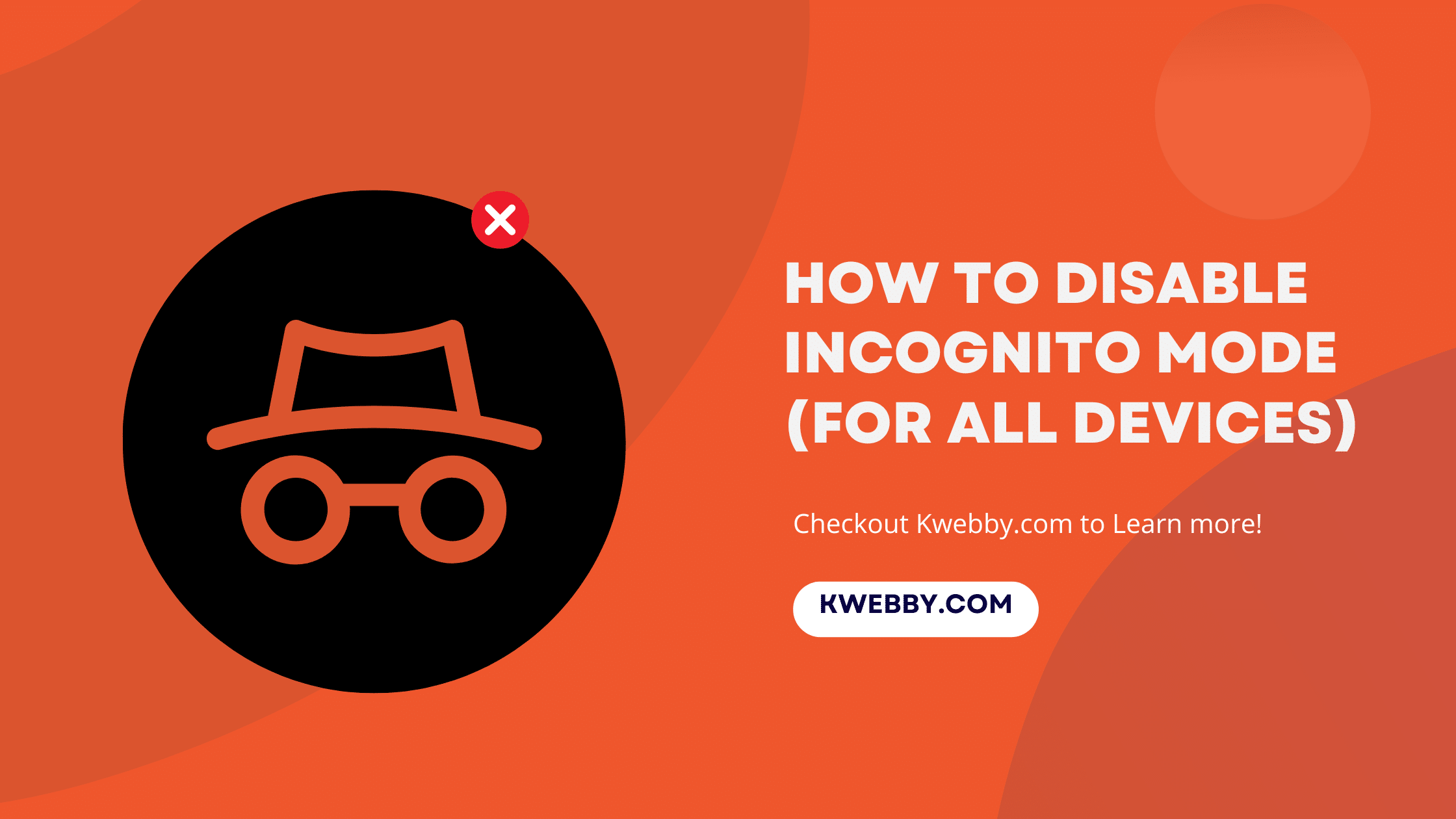In today’s digital age, navigating the web with an awareness of privacy has led many to utilize incognito mode across popular web browsers like Google Chrome, and Microsoft Edge.
This private browsing feature is a go-to for users aiming to keep their online activity under wraps, avoiding the storage of browsing history, cookies, and site data.
While incognito mode offers a layer of privacy by not saving the details of one’s online excursions or searches, there are scenarios where disabling this feature becomes necessary. Understanding how to disable incognito mode, or turn off private browsing, becomes crucial in these instances.
This guide is tailored to walk you through the steps to disable private browsing across different browsers, ensuring you can manage your or others’ internet use more effectively, keeping track of important online activities without the veil of incognito mode.
How to take a Scrolling Screenshot Without Software (For all Devices)
Disable Incognito Mode on Windows
We use a number of browsers and the way to disable incognito mode on each of these is different. For this article, we are going to refer to two of the most widely used browsers: Chrome and Edge.
On Chrome
Step 1: Open Command Prompt as Administrator
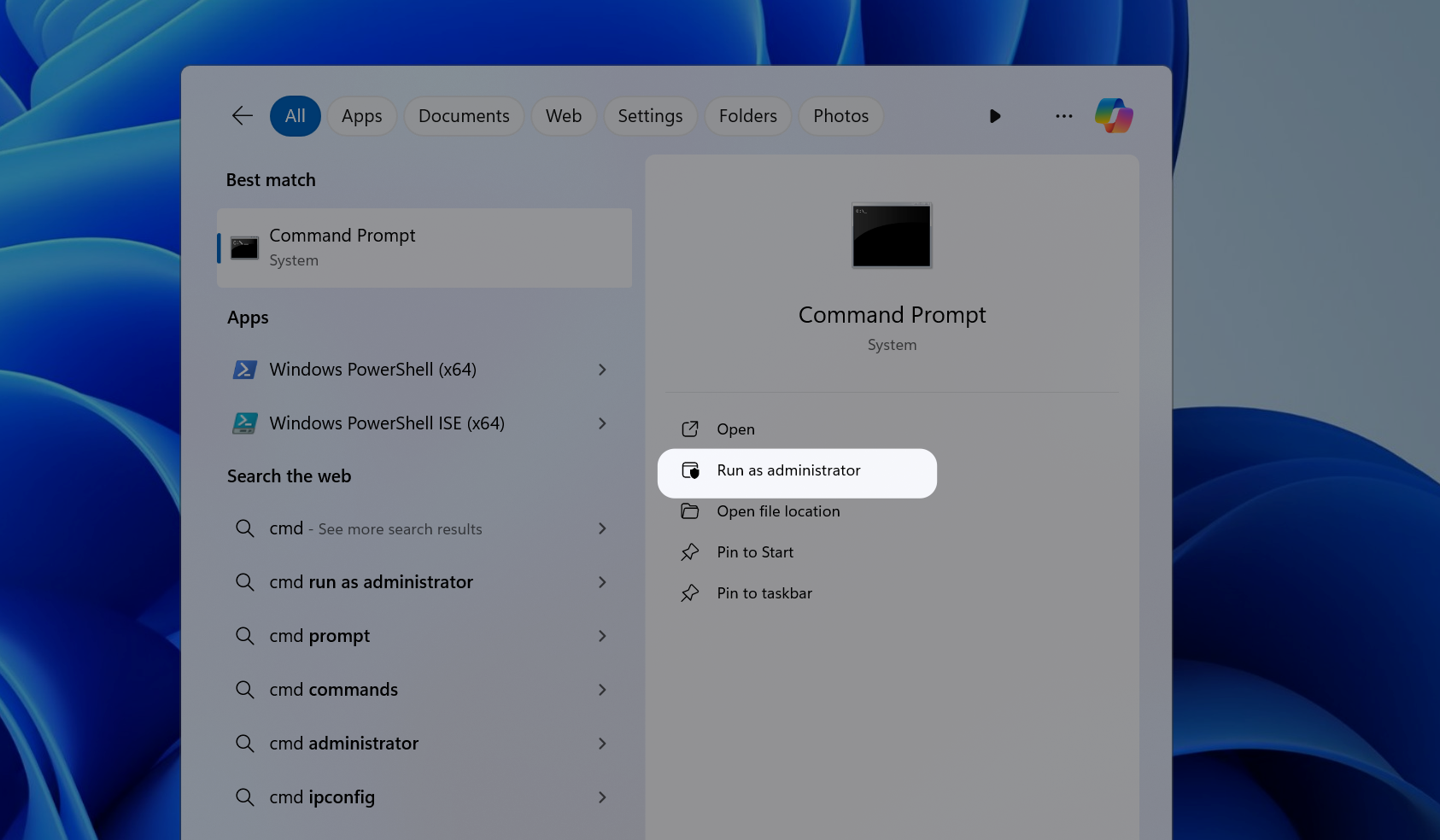
Press the Windows key on your keyboard, then type “Command Prompt” into the search bar and choose “Run as administrator.”
Step 2: Execute the Command to Disable Incognito Mode
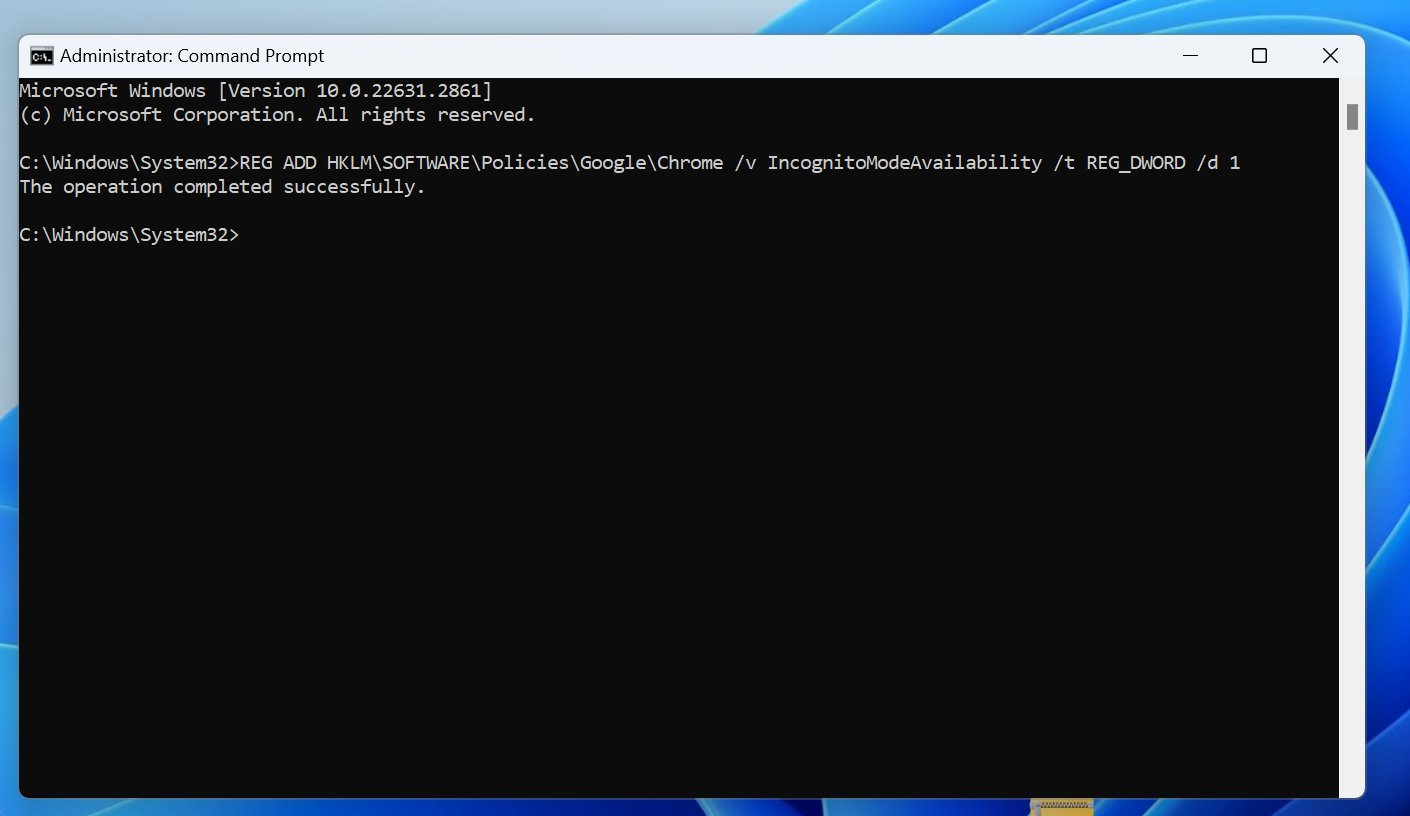
In the Command Prompt window, you’ll need to type the following command to turn off incognito mode:
REG ADD HKLMSOFTWAREPoliciesGoogleChrome /v IncognitoModeAvailability /t REG_DWORD /d 1
After typing this command, press Enter to execute it. This command modifies the registry to disable private browsing features in Google Chrome, specifically targeting the incognito tabs option.
Step 3: Reboot Your PC
After successfully executing the command, close the Command Prompt window and reboot your PC.
Step 4: Launch Google Chrome Without Incognito Mode
Once your PC has rebooted, open Google Chrome. You should now notice that the option to open a new incognito window is no longer available.
By following these steps, you’ve successfully disabled the private browsing function, helping you keep track of browsing history or enforce parental controls.
On Microsoft Edge
Microsoft Edge, the default web browser for Windows, also includes an option for private browsing known as InPrivate browsing. Follow these straightforward steps to disable InPrivate browsing in Microsoft Edge.
Step 1: Open Registry Editor

Hit the Windows key to launch the start menu, then type `REGEDIT` into the search field. Hit Enter to launch the Registry Editor.
If prompted by the User Account Control asking for permission to allow the program to make changes to your computer, click `Yes` to proceed.
Step 2: Navigate to the Microsoft Key

In the Registry Editor, use the navigation pane on the left to find the following path:
HKEY_LOCAL_MACHINESOFTWAREPoliciesMicrosoft
Step 3: Create a New Key

Right click Microsoft then select `New > Key
Step 4: Create the Main Key

Give it a name – `MicrosoftEdge`. Right click on it and head to `New > Key` to create another key under it. Name this new key `Main`.
Step 5: Set the InPrivateModeAvailability DWORD Value

Right-click on the `Main` key, select `New > DWORD (32-bit) Value`. Name this new DWORD `InPrivateModeAvailability`.
Double-click on this newly created DWORD, set the value to `1`, and click `OK` to save your changes.

Step 6: Close Registry Editor and Reboot Your PC
After making these changes, close the Registry Editor and reboot your computer. This step is necessary for the changes to take effect.
Following the reboot, open Microsoft Edge. You should notice that the InPrivate browsing option is no longer available, confirming that you’ve successfully disabled InPrivate browsing.
How to find your Saved WiFi password Easy on Windows 11?
Disable Incognito Mode on Mac
Disabling incognito mode in Google Chrome on a Mac requires a different approach compared to Windows.
This guide walks you through each step to completely disable incognito mode in Chrome for MacOS users.
Step 1: Open Terminal
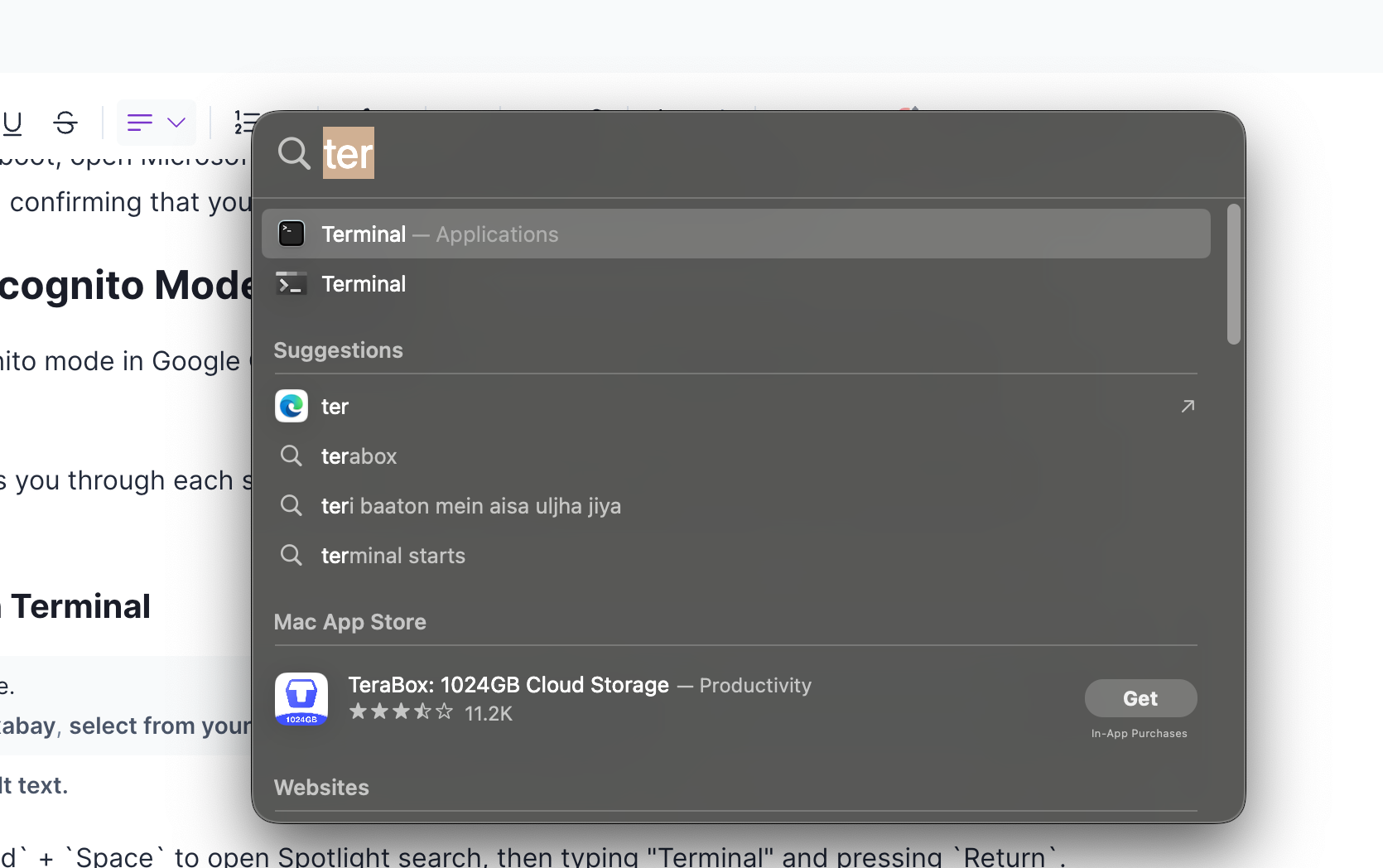
Press `Command` + `Space` to open Spotlight search, then typing “Terminal” and pressing `Return`.
Step 2: Enter the Command to Disable Incognito Mode
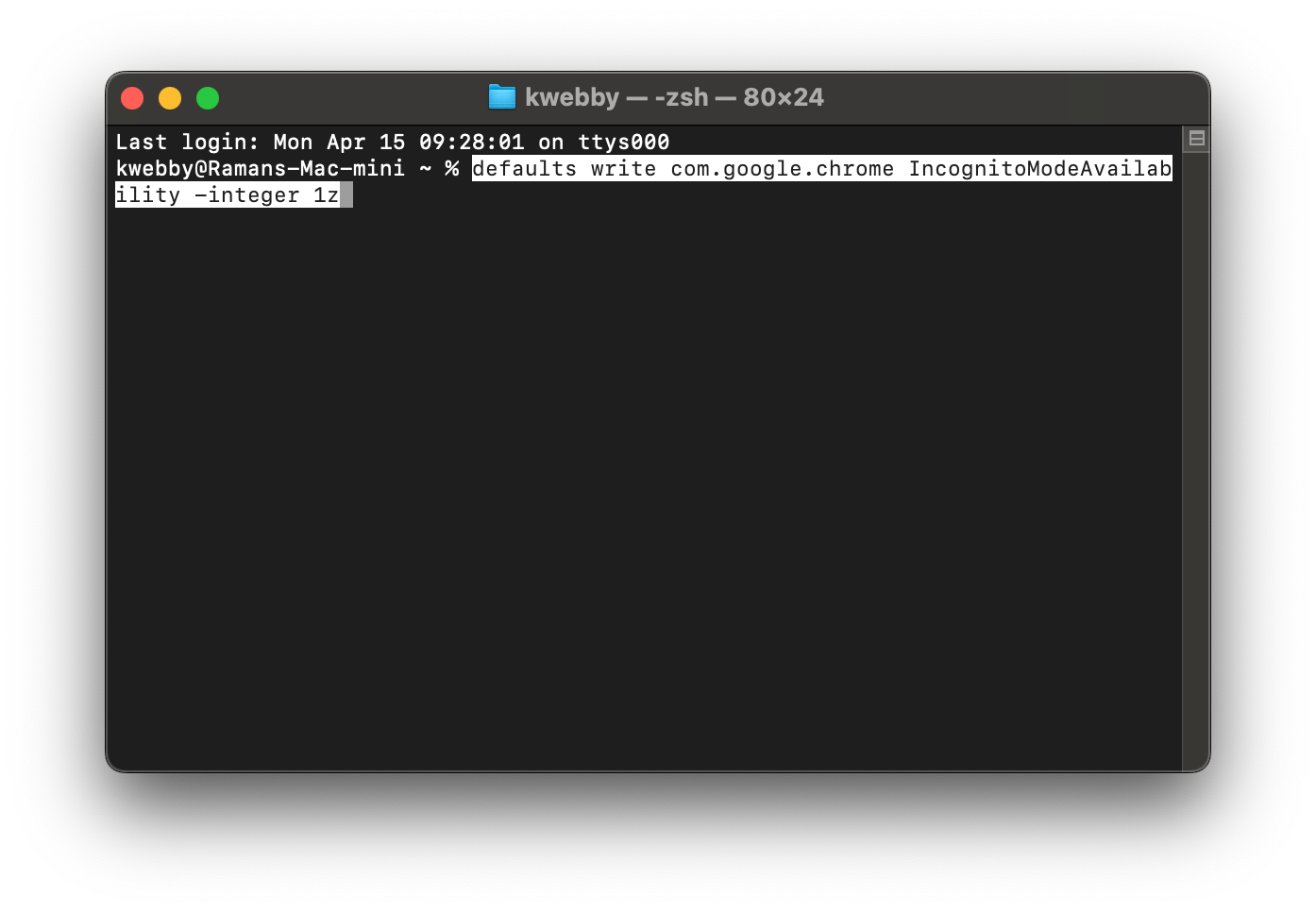
Once Terminal is open, type the following command to disable incognito mode in Google Chrome:
defaults write com.google.chrome IncognitoModeAvailability -integer 1z
Step 3: Reboot Your Mac
For the changes to take effect, you need to restart your Mac.
To reverse the process and re-enable incognito mode, the following command can be used:
defaults write com.google.chrome IncognitoModeAvailability -integer 0z
Executing this command via Terminal and rebooting your Mac will restore the incognito mode option in Google Chrome, allowing for private browsing once again.
How to check if MySQL is installed on Mac (4 Easy Methods)
Error: EACCES: permission denied on your Apple macOS (Fixed)
How to write, add text on PDF on a MAC
How to turn off Private Browsing on iPhone
Turning off Private Browsing mode on your iPhone is a quick process. This guide will walk you through the steps to disable Private Browsing mode on the Safari browser, the default web browser for iOS devices.
Step 1: Open Safari on Your iPhone
Begin by launching the Safari app on your iPhone.
Step 2: Access Your Open Tabs
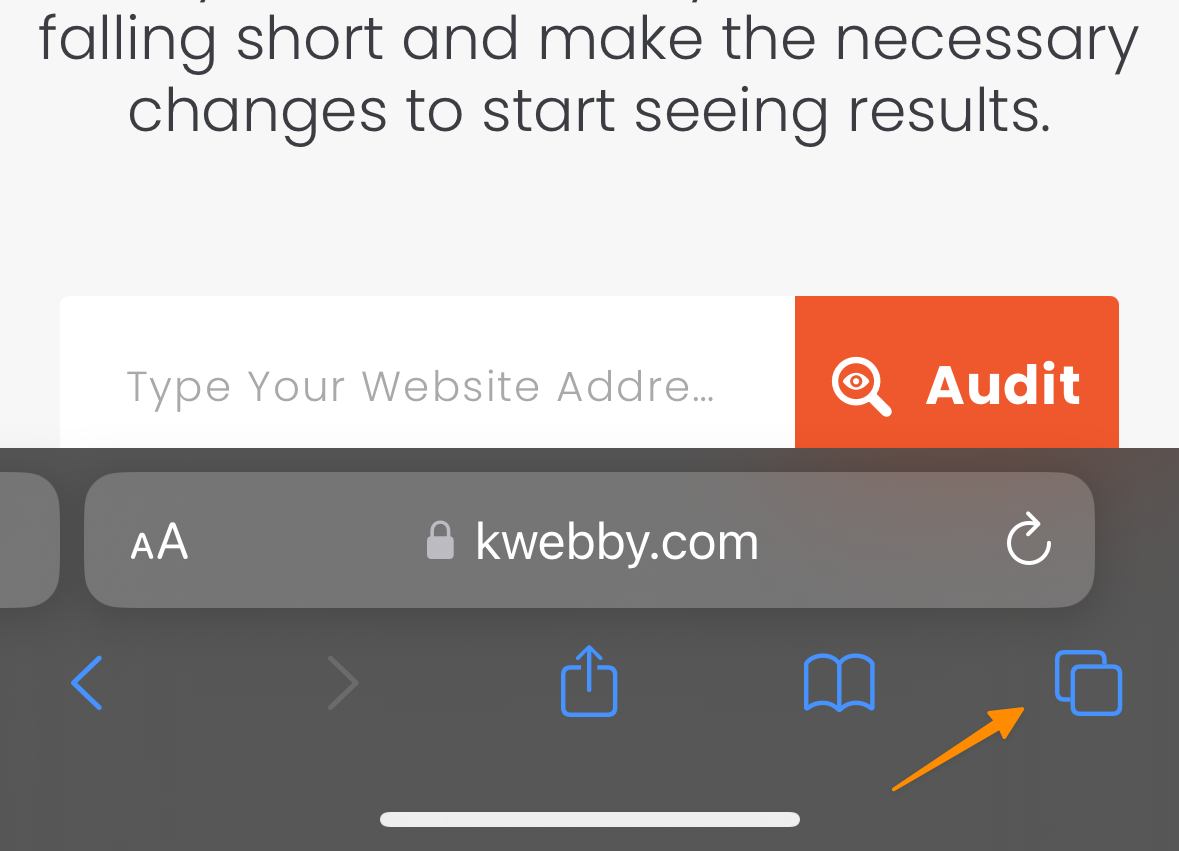
Next, tap the Tabs button to view your currently open web pages. The Tabs button is usually found at the bottom right of the screen and may look like two overlapping squares.
Step 3: Exit Private Browsing Mode

Look for the option that says ‘Private’ to reveal the Tab Groups list.
Step 4: Select Your Tab Group
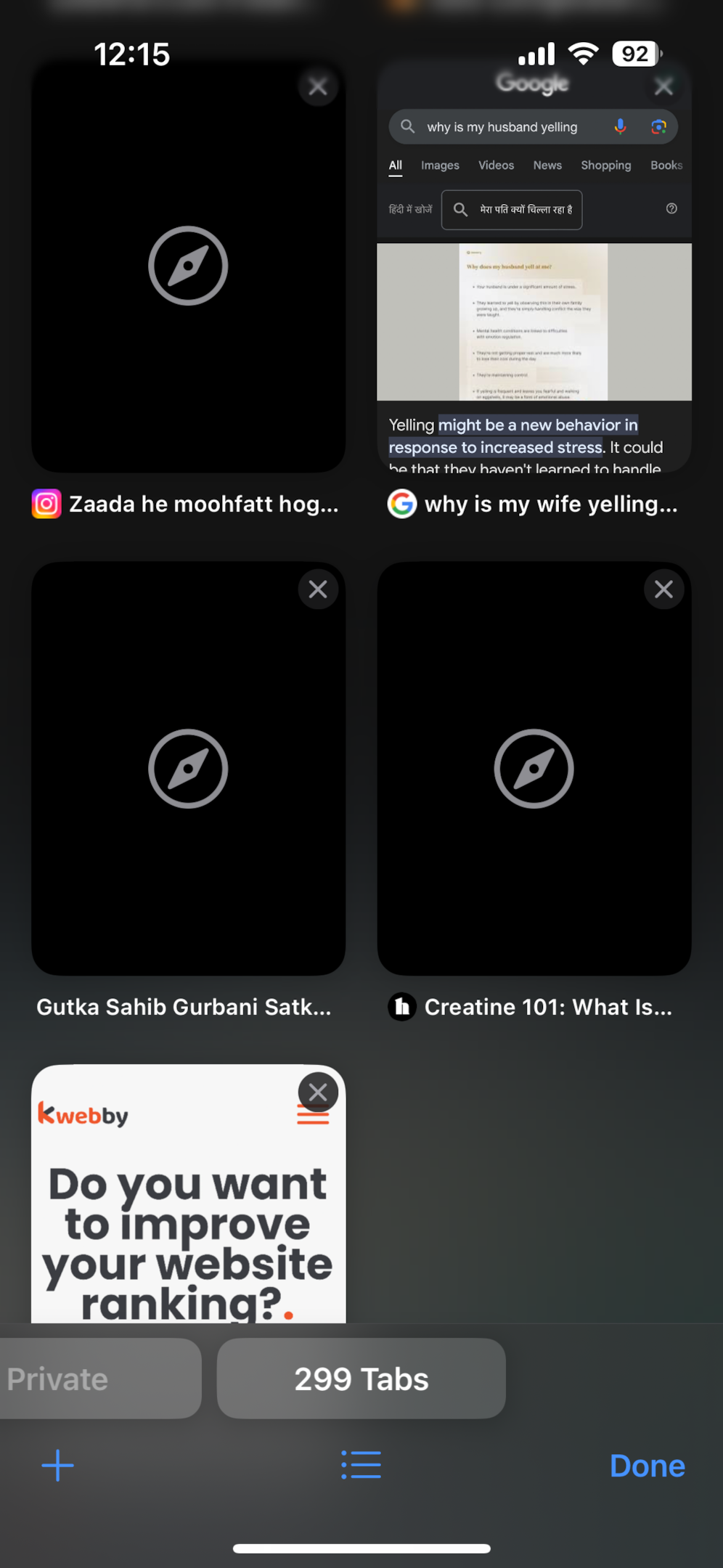
Tap on the group titled ‘[number] Tabs’—where “[number]” represents the number of tabs open in that group. Then, tap ‘Done’.
These steps effectively disable the Private Browsing or incognito mode on your iPhone’s Safari browser.
Recover Deleted iPhone Messages – Quick & Easy Guide
How to Change Location on Facebook Marketplace on iPhone
How to Make a PDF on iPhone (2 Easy Methods)
How to Convert Image to PDF on iPhone (5 Easy Methods)
Close Incognito mode on Android
Step 1: Open Chrome on Your Android Device
Start by opening the Google Chrome app on your Android phone or tablet.
Step 2: Switch Between Tabs
Once Chrome is open, look at the top right corner of the screen and tap on the ‘Switch tabs’ icon. This icon may appear as a square or numeral, depending on the version of Chrome you’re using, signifying the number of tabs you have open.
Step 3: Locate Your Open Incognito Tabs
In the tab view, you’ll find your open tabs separated by normal and Incognito. Incognito tabs are usually indicated by a darker color scheme and the incognito icon—akin to a spy or detective’s hat.
Step 4: Close All Incognito Tabs
To exit incognito mode on your Android device, locate the incognito tabs open in Chrome. Then, tap on the ‘Close’ button, typically found at the top right corner of your incognito tab view.
This action will effectively close all your incognito tabs, thus disabling incognito mode or private browsing features for that session.
Closing all incognito tabs ensures that your private browsing session is ended, allowing you to revert to standard browsing where your activities may be recorded in your browsing history.
How to See Reels you watched on Facebook (iOS, Android, PC)
How to Clear Cache on Instagram on Android and IOS Devices
How to delete autofill email addresses on Android (3 Easy Methods)
3 Ways To Know Who Unfollows You on Instagram (iOS & Android)
Conclusion
In conclusion, mastering how to disable incognito mode across various browsers, including Google Chrome and Safari, equips users with pivotal control over private browsing features, enhancing their ability to safeguard privacy and monitor online activity effectively.
Whether you’re aiming to disable Chrome’s incognito mode on Android phones, turn off Private Browsing on iOS devices, or ensure transparency in web usage through parental controls, the steps outlined offer a comprehensive guide to managing private tabs and retaining visibility over browsing history.
It’s essential to remember that each browser – from Safari and Chrome to Firefox and Microsoft Edge – requires a unique approach to disable private mode settings.
Test your knowledge
Take a quick 5-question quiz based on this page.







